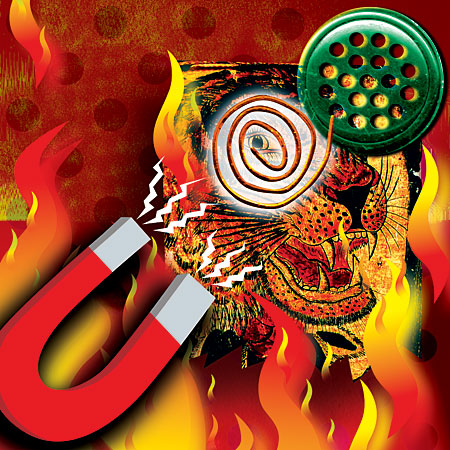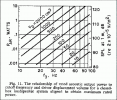Hi,
dynamic drivers are quite inefficient, only few percent of electrical power fed in turns into acoustic sound and rest is emitted as heat. You can simplify and assume ~all used amplifier power turns into heat somewhere. Most of it in voice coil if that's the dominating resistance, some could turn into heat on some other high resistance like in a resistor in crossover network, or if you have long thin wiring. Some heat happens in moving parts, perhaps somewhere else, but I think its fine to make a thought experiment assuming that "all power heats voice coil".
Heat makes resistance of the wire go up, which affects impedance of the circuit which has effect on system frequency response and sensitivity. Basically system Q apparently rises and output goes down. Heat from voice coil is transferred to the surroundings, to the magnet and structure of the driver which then radiates the heat into surrounding air, inside a box. If there is ports the air gets at least some heat exchange to outside world increasing temperature difference between magnet and air and helping the system cool bit more efficiently than with closed box. Closed boxes usually have insulation, so heat builds up inside the box with some time span.
How problematic this is? depends on your system sensitivity and how loud and how long and what crest factor your music is on. If you have 12" driver and background listening its not too much, perhaps few watts, like a LED light bulb, not much heat and not much of a problem. Perhaps it heats like a phone charger. But what about if there is hundred watts or more continuously for prolonged periods? A kilowatt?

Heat transfer is suddenly a big problem, the voice coil turns into a toaster.
So, plugging ports could be problematic, or not. Hopefully you have now some questimate how big of an issue it is for you!

In general, one would want to avoid any significant change in sound, so any significant heat buildup in the system.
If it's a problem just make few more subs, with bigger cones and enclosures to get sensitivity up and more acoustic output per electrical watt. You could mount the drivers magnet out if you wish, but again with high power they likely make mechanical noise so it's better to use biggest bass system you can comfortably fit in your room, for many reasons and heat management could be one.
You can find numerous articles about the stuff, for example:
https://blog.miscospeakers.com/thermal-management-of-speaker-systems
As Hans Christian Oersted, the Danish physicist and founder of electrodynamics, discovered in 1819, an electric current passed through a wire generates a magnetic field. Place that wire close to a permanent magnet and the interaction of the two fields will generate a force. That, in two...

www.stereophile.com


